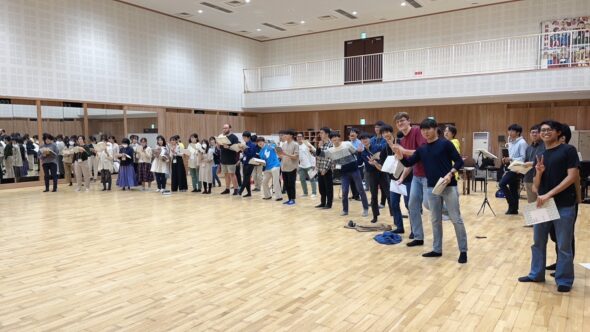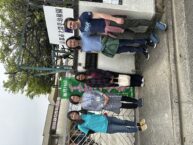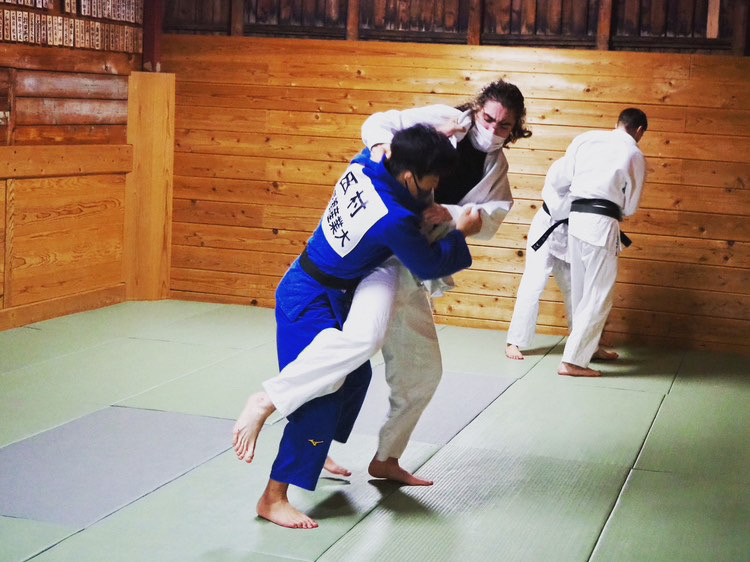 For my Community Involvement Project this semester I volunteered at Ohara Gakuin, an elementary and middle school in Ohara, a small town north of Kyoto. After a scenic bus ride up to the town, I spent my Wednesdays having lunch with the school’s students, assisting with their English classes, and observing other classes on a variety of subjects. Ohara Gakuin provided me with a look into the Japanese education system and the inner workings of an ordinary school. Studying the way in which teachers approached students of drastically different age groups and learning about English instruction in Japan was fascinating, and getting to know some of the kids over the course of my short time at the school was a lot of fun.
For my Community Involvement Project this semester I volunteered at Ohara Gakuin, an elementary and middle school in Ohara, a small town north of Kyoto. After a scenic bus ride up to the town, I spent my Wednesdays having lunch with the school’s students, assisting with their English classes, and observing other classes on a variety of subjects. Ohara Gakuin provided me with a look into the Japanese education system and the inner workings of an ordinary school. Studying the way in which teachers approached students of drastically different age groups and learning about English instruction in Japan was fascinating, and getting to know some of the kids over the course of my short time at the school was a lot of fun.
I would advise students looking into this CIP to definitely check it out, as it was a truly unique experience, particularly if you’re interested in working with children in the future or looking into the JET program. Try to take every opportunity to chat with the kids and other teachers, even if it’s awkward or neither party fully understands what’s being said. The kids generally want to get to know you, but can be shy or unsure of how much Japanese you understand— don’t be afraid to go for it and mess up!

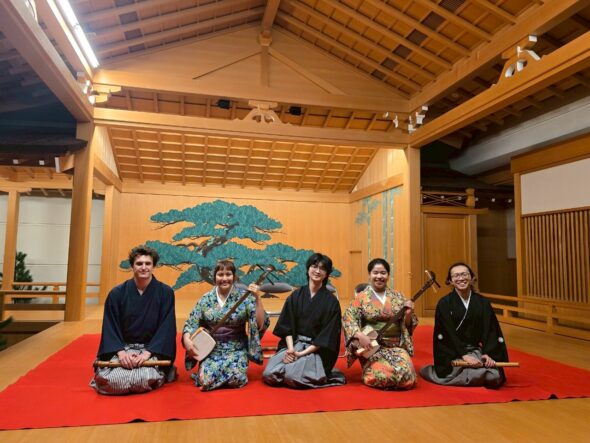
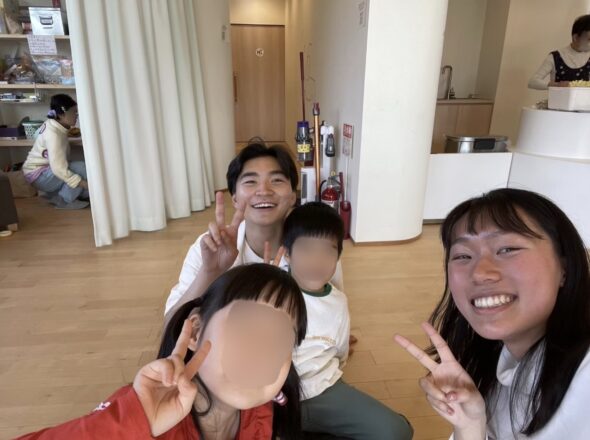
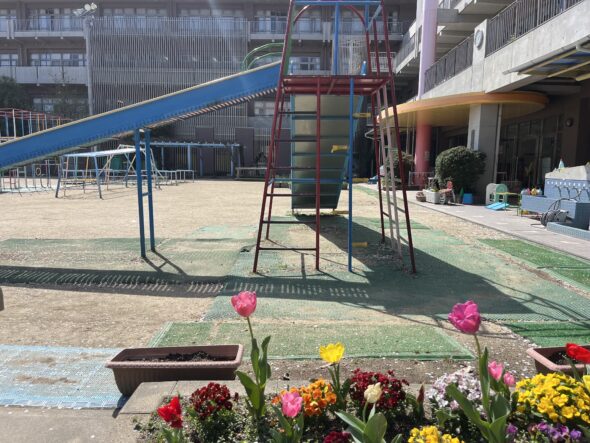
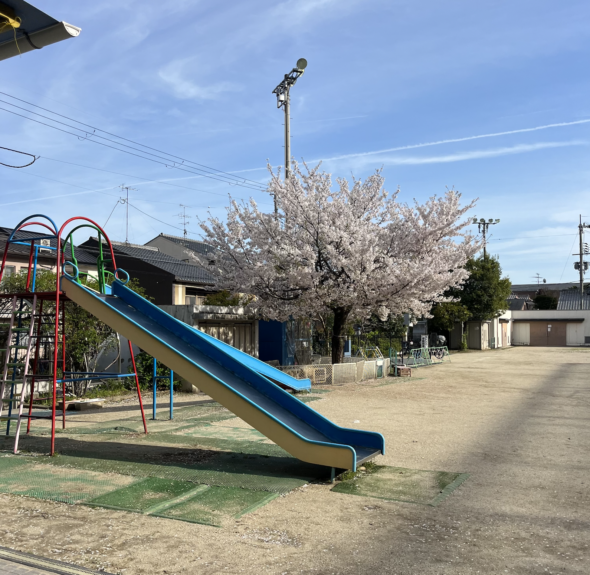
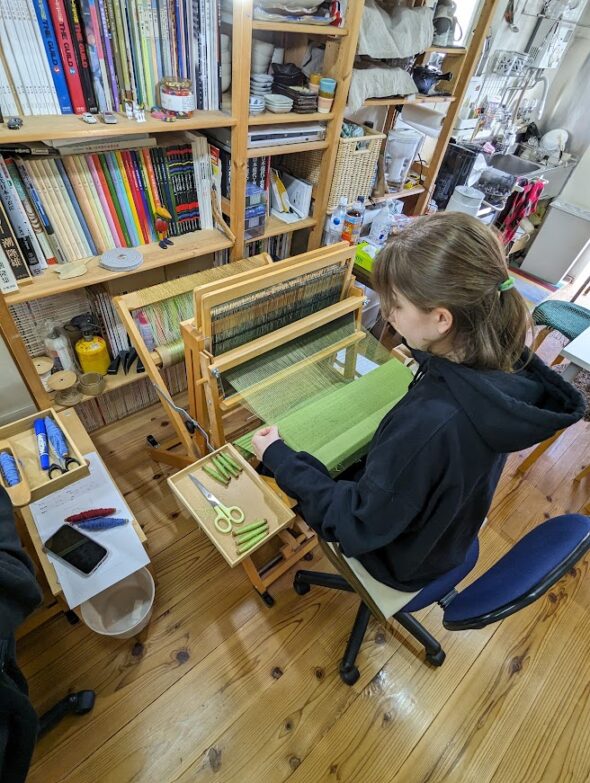
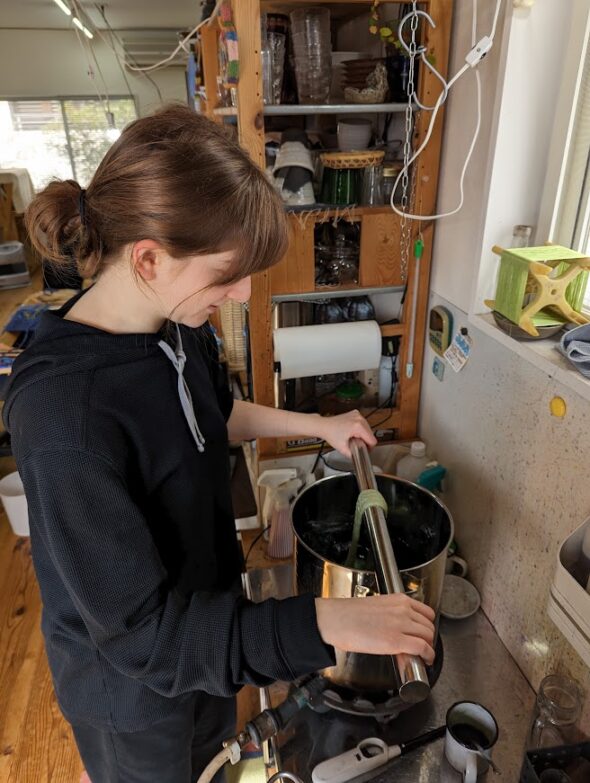
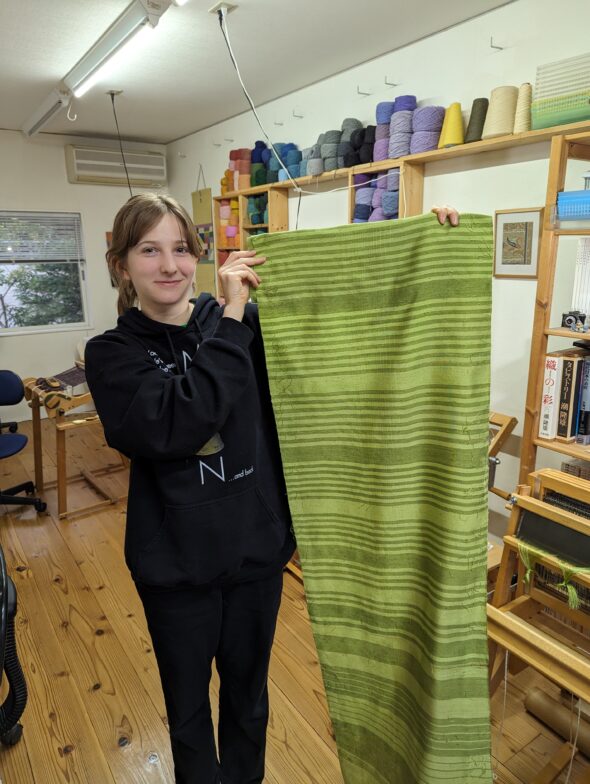 For CIP I took weaving lessons with 河崎先生 and ゆり様. I learned to weave on the loom, develop my ideas into physical form, dye threads, etc. – creating 6 projects this semester (3 scarfs, two mats, and a wall piece). Having this time with 河崎先生 and ゆり様 has left me with much more than a new skill set – I have gained confidence in unfamiliar territory and have grown in my ability to enjoy the present. When I look back on this time and at the pieces I made I will be thinking of the laughs shared and enjoyment in problem solving that I experienced with 河崎先生 and ゆり様.
For CIP I took weaving lessons with 河崎先生 and ゆり様. I learned to weave on the loom, develop my ideas into physical form, dye threads, etc. – creating 6 projects this semester (3 scarfs, two mats, and a wall piece). Having this time with 河崎先生 and ゆり様 has left me with much more than a new skill set – I have gained confidence in unfamiliar territory and have grown in my ability to enjoy the present. When I look back on this time and at the pieces I made I will be thinking of the laughs shared and enjoyment in problem solving that I experienced with 河崎先生 and ゆり様. 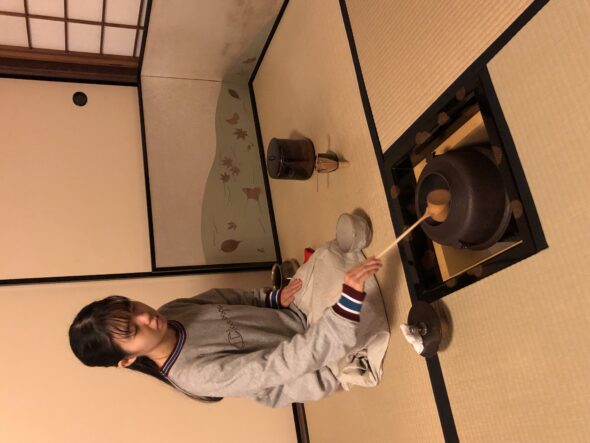 For my Community Involvement Project (CIP), I learned Japanese tea ceremony at 幽静庵 (yuseian), which is a tea room that was designed by 井口海仙宗匠 (Iguchi Kaisen), the brother of the 14th Urasenke Grandmaster 淡々斎御家元 (Tantansai). At the 幽静庵, I had many precious experiences, including learning various tea preparation procedures (お点前, otemae) and participating in a special ceremony to celebrate the change of season called 口切 (kuchikiri).
For my Community Involvement Project (CIP), I learned Japanese tea ceremony at 幽静庵 (yuseian), which is a tea room that was designed by 井口海仙宗匠 (Iguchi Kaisen), the brother of the 14th Urasenke Grandmaster 淡々斎御家元 (Tantansai). At the 幽静庵, I had many precious experiences, including learning various tea preparation procedures (お点前, otemae) and participating in a special ceremony to celebrate the change of season called 口切 (kuchikiri).